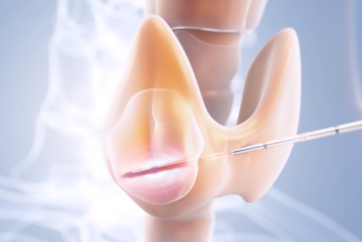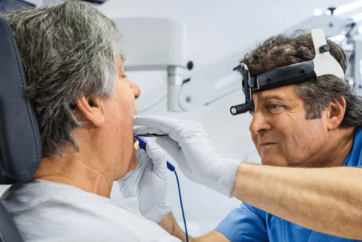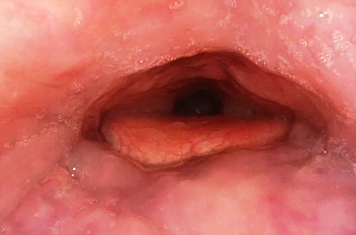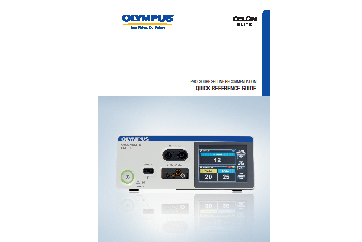TREATMENT OF HABITUAL SNORING – SHORTENING OF UVULA / WEBBING
Additionally, if you find pronounced webbing and significant hypertrophy of the uvula [Figure 06a/b], this may indicate that a reduction of the uvula and the soft palate mucous membrane is necessary. In the following chapter, it is demonstrated how to use the CelonProCut technology to perform uvula palatoplasty during the same treatment session with no additional risks.

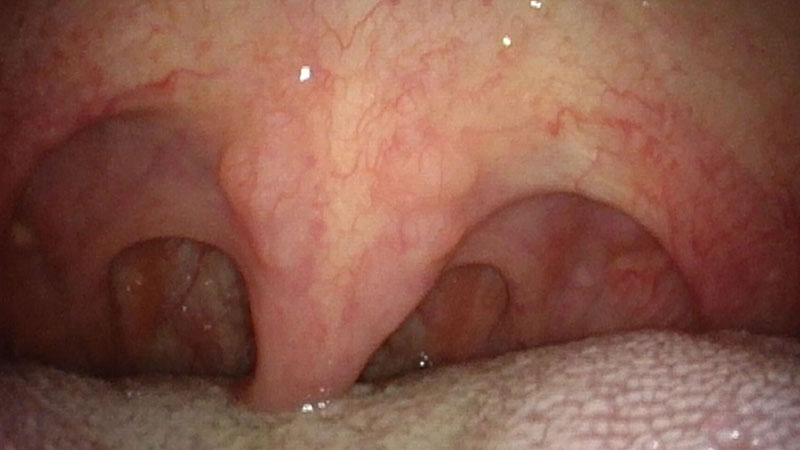
05 | Treatment of the Uvula and Webbing
Power settings: For this procedure, a power setting of 20 to 25 watts (mode: PureCut) is recommended. The positioning of a neutral electrode on the patient is not required.
Use the CelonProCut accessories to shorten the uvula and webbing.
Firstly, take hold of the uvula with the CelonProCut gripping forceps, which also serve as a return electrode. Secondly, activate the foot switch. Then, the incision can start to be made with the CelonProCut electrode [Figure 07a/b].
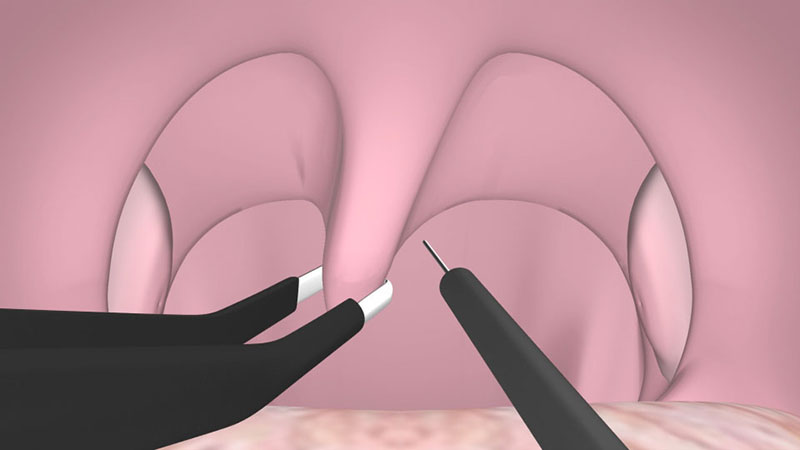
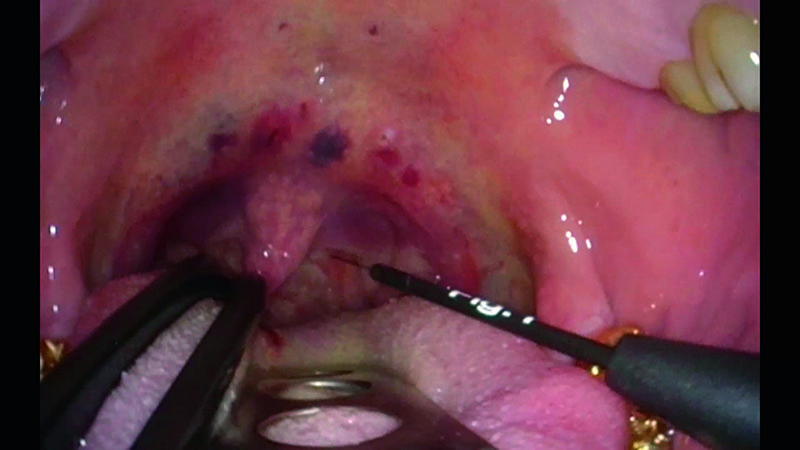
It is recommended that the resection of excessive mucous membrane is performed as a rounded shape on both sides of the uvula. Make sure to leave at least 2 mm of mucous membrane in order to avoid damaging the muscle. An excess of mucous membrane also accelerates the wound healing and reduces postoperative pain.
The next step is the resection of the tip of the uvula by using the CelonProCut accessories [Figure 08a/b].
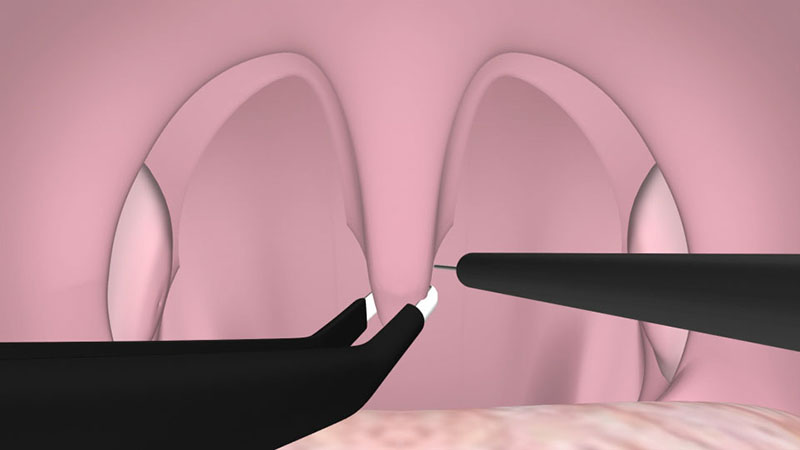

The uvula musculature should be left in place. It is recommended that the reduction of the uvula and the soft-palate mucous membrane is carried out to the extent shown in this illustration [Figure 09a/b].
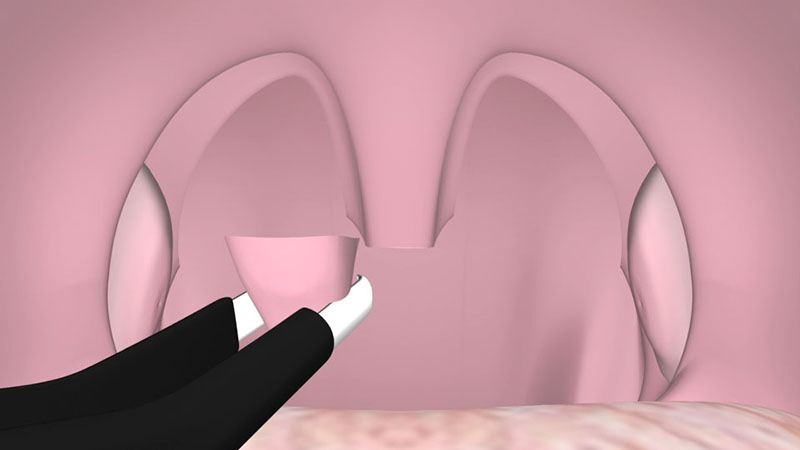

06 | Therapeutic Effect
Uvula and webbing will shorten further during the healing process in the weeks after the procedure.
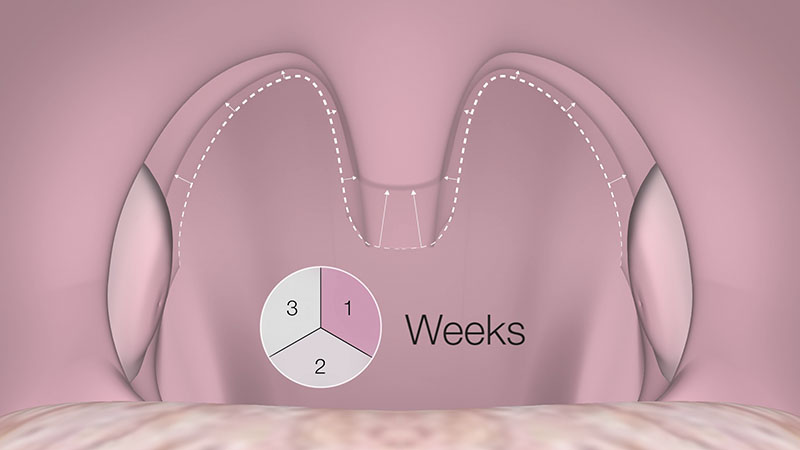
07 | Postoperative Care
To treat postoperative pain and swelling, ibuprofen or diclofenac is recommended, along with a proton pump inhibitor (such as pantozol) for longer-term analgesic issue.
The pain may last eight to ten days. A repetition of this procedure is normally not necessary.
Schedule a follow-up visit three days after the procedure and then again after three weeks.
- Content Type

